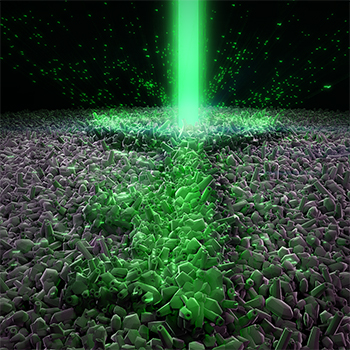
A quantum-secure authentication key uses light to protect credit cards without employing secrets. Credit: MESA+ Institute, University of Twente
Keeping financial and personal data secure is becoming more and more difficult as thieves develop new technologies that can copy or steal the information on magnetic-striped and chipped cards. A new type of photon-based authentication called quantum secure authentication (QSA) may soon be available that completely avoids this risk to keep identification and credit cards secure.
In the journal Optica, Sebastianus Goorden and colleagues at the University of Twente, Netherlands, describe a classical multiple-scattering key that uses a pattern of light transmitted on nanoparticles to create a fraud-proof “key” (Optica, doi: 10.1364/1.000421). The process starts with transmitting a small number of phase-specific photons from a laser onto a specially prepared paper-thin section of white paint with millions of nanoparticles on the surface of a credit card, making a complex, unique pattern in the nanoparticles.
The authentication key is a light pulse with fewer photons than spatial degrees of freedom that verifies the spatial shape of the reflected light. A bank can send a pattern of photons (a “challenge”) that can easily verify the pattern via a speckle-like “response.” But if an adversary were to attempt to intercept the bank’s pattern, the quantum properties of the light would be destroyed, and only a fraction of the information needed to authenticate the transition would be captured. If attackers can’t determine the challenge, they can’t construct the expected response. Nor can an adversary characterize the properties of the key (a process called skimming) because QSA doesn’t require any secret information.
Lead author Pepijn Pinske likens the process to dropping 10 bowling balls that bounce to create 200 impact points. Collection of the bowling balls won’t tell you what pattern they created on the floor. And observing them falling would disrupt the system.
Quantum-secure authentication could be useful in protecting government buildings, credit cards, IDs, bank cards, and even cars.
